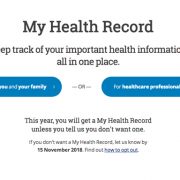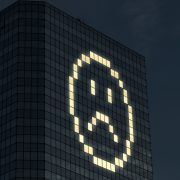As the basket at the foot of the AMP guillotine begins to fill, for those of us who have had the privilege (or curse) to have been active in business for more than 3 decades, the unfolding events appear all too familiar.
Hubris, and wilful blindness have never combined to end in a positive result. Never-the-less, both tend to manifest as part of a regular business cycle.
An outbreak of believing your own PR is likely to resulting in mounting casualties.
Business success depends not only on sound strategies – well executed – but, annoyingly, on a degree of luck, timing and a supportive broader social and regulatory environment. Too often management and boards can mistake a fair proportion of the latter three (delivered by regular variations in business and consumer confidence) for their own genius.
The resulting natural tendency is to lessen the focus on detail and begin rewarding one another for the job well done. A tendency naturally increased if it is other people’s money that is being used.
The mess uncovered at the AMP is almost certainly the beginning of a long stream of hubristically driven shambles that the, much delayed, Royal Commission into Misconduct in the Banking, Superannuation and Financial Services will bring to light.
The damage to personal and corporate reputations will, in some cases be irreversible and in most cases, take long periods to recover from.
Two things confound and disappoint the public and work to lessen an organisation’s social licence to operate. First, the evident avarice-driven disregard for rules and customer benefit. Second, the failure of boards, as houses of review and management supervision, to identify and act on such abuses.
As professional communicators, we are regularly asked to convey good news and minimise poor outcomes when engaging with ‘stakeholders’ (read anyone who can impact on a share price that drives bonuses or who can tip folks out of a job). Both on principle and in the longer-term interests of our clients, we never knowingly misrepresent the facts. We may focus on one element more than another, but to lie is to ensure you will, eventually, get caught-out. An outcome that damages all involved.
Board members of any public company, industry body, not-for-profit or other such organisations have a responsibility to ask management the difficult questions, to challenge assumptions and, where necessary, to check the detail. Even if all is presented, on the surface, as good news.
In getting to the facts, too often we have witnessed situations where process is relied upon rather than proper answers. Instances where to us, as so-called spin masters, it is obvious that either not enough substance is present and/or too much pre-spin has already been applied.
Thankfully, few such cases have involved our existing clients. But we have worked on quite a few crisis management cases where the damage has already occurred.
Business cycles have, even in our relatively short experience, displayed a predictable regularity. A longer view of business history does not support an alternate conclusion. Executive management and boards should, in good times and bad, take a close look at how their businesses operate, how they generate the results, consider the prevailing conditions and ensure that they are well insulated from possible ethical, regulatory and operational failures.
If that is happening, the task for the communicators is to tell a good story, well. If not – welcome to the town square, with the crowd baying for blood. The most that can be done at that point (at great expense) is make the best of bad situation and prepare the ground for the successors.




